Hundreds of miles from civilisation, two ships sink at opposite ends of the same deserted island in a true story of human nature and leadership at its best—and its worst.
In our documentary series Intrepid New Zealand I learnt about and recreated parts of two tragic, yet inspiring, shipwrecks that occurred in New Zealand’s waters. The lessons from these two ships (the Grafton & Invercauld) are so relevant to people, business and leadership right now it’s creepy.
Once shipwrecked your world is turned upside down, your senses are overwhelmed, despair can be contagious, and your previous objectives while on board suddenly become irrelevant.
Sound familiar?
OK, let’s head south for an adventure…
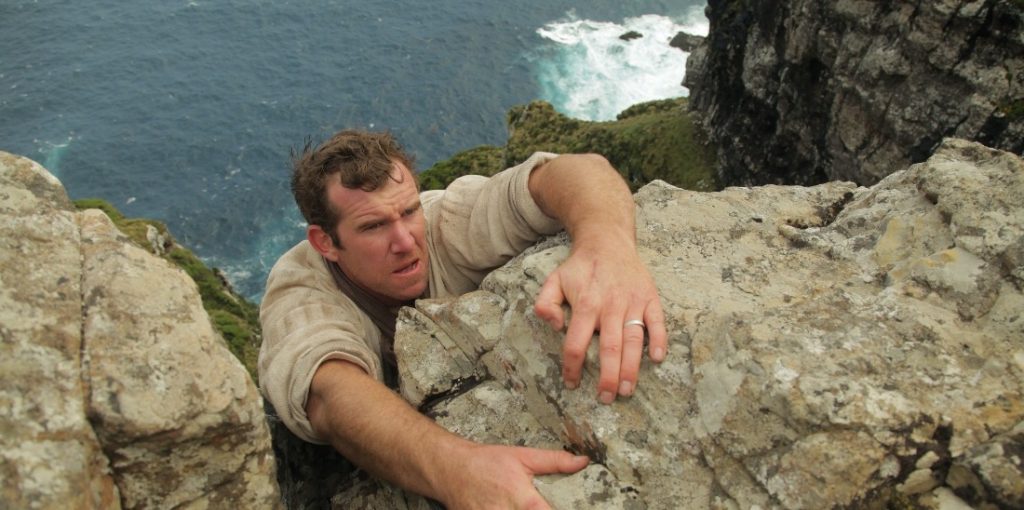

The sub-Antarctic Auckland Islands are a sanctuary for many species of plants and animals and are culturally and spiritually significant to Ngāi Tahu. Situated 465km south of New Zealand, the climate is wet, cold and windy, with a temperature averaging around 7 degrees.
Their isolation makes them a treasure today for conservationists, but 140 years ago they were often a death warrant for seamen. If ships got too close, the sub-Antarctic winds would crumple them against shallow reefs and the islands’ tall cliffs. The lucky sailors drowned instantly. Most of the rest died slowly of exposure or starvation. A few survived to share the story.
On the Grafton were five men led by Capt. Thomas Musgrave of Britain; a French gold miner named François Raynal; a leprosy-deformed Portuguese cook; a stoic Norwegian and a young Englishman — banded together in a common quest for survival.
Eight days after the crew abandoned their boat in a ferocious storm at the southern end of the islands, the sun finally came out and the men emerged from a ripped sailcloth tent, Bible in hand. Raynal accounted after the ordeal that when the captain read out Christ’s exhortation to his disciples to love one another, all the listeners “Burst into tears”.
New Zealand’s inspirational leader and Prime Minister Jacinda Ardern explained the country’s Covid-19 situation beautifully-clear and galvanised the nation around the principles we must ‘stand for’ and our response goals: “Stay home. Save lives”.
Lesson 1:
Simple messages, repeated frequently.
Musgrave and the others salvaged whatever they could from their ship and built a very small cabin. They cooperated in procuring food and over the next 20 months they would pray, play chess and take parrots as pets. The men nursed one another and even held a democratic election, voting the captain their leader.
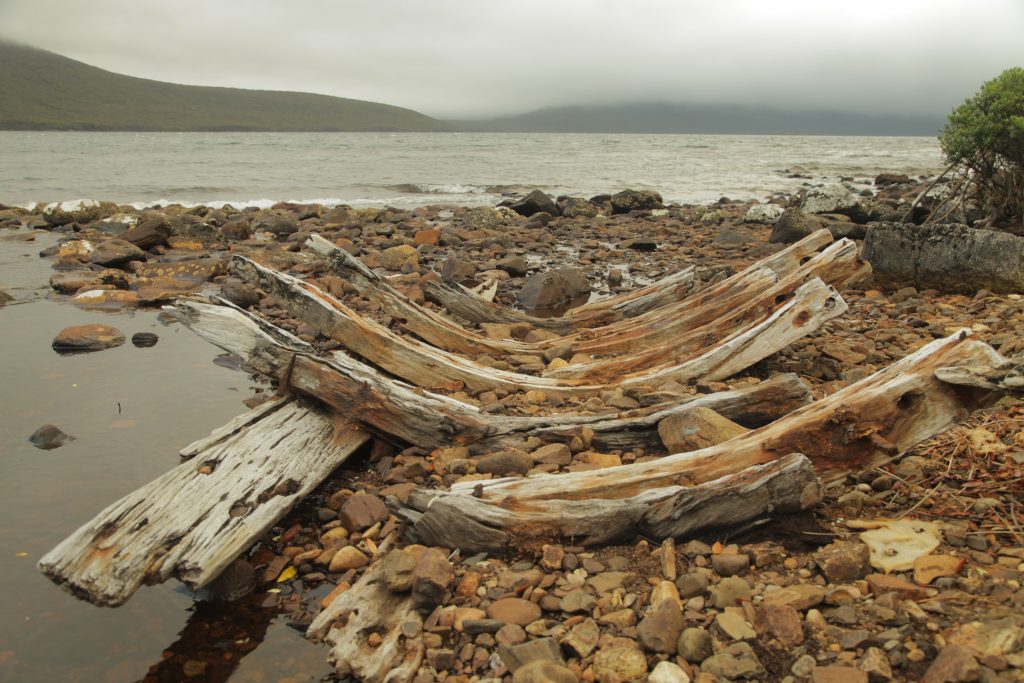
……………………….
Only four months after the Grafton sinks, and 20 miles northwest, a Scottish square-rigger named the Invercauld strikes a reef and sinks. Of the 25 crew, only 19 make it to shore. The captain, George Dalgarno, appears to fall into despair and madness immediately while the rest spend the next few days desperately searching for food on the rocky shoreline, locked in by a 300 foot cliff.
The crew resort to anarchy, rage and cannibalism. If the southern part of Auckland Island is all “Robinson Crusoe”, the northern part is more “Lord of the Flies.” The only man with a grip on the situation is a low-ranking sailor named Robert Holding, despite some of the others threatening to eat him.
For my IntrepidNZ co-host mate Kevin Biggar and I, explaining and recreating some of their hardship was bloody tough. Like their climb from sea level up to the plateau of the island, I’d prefer not to experience the challenges of that coastline again.
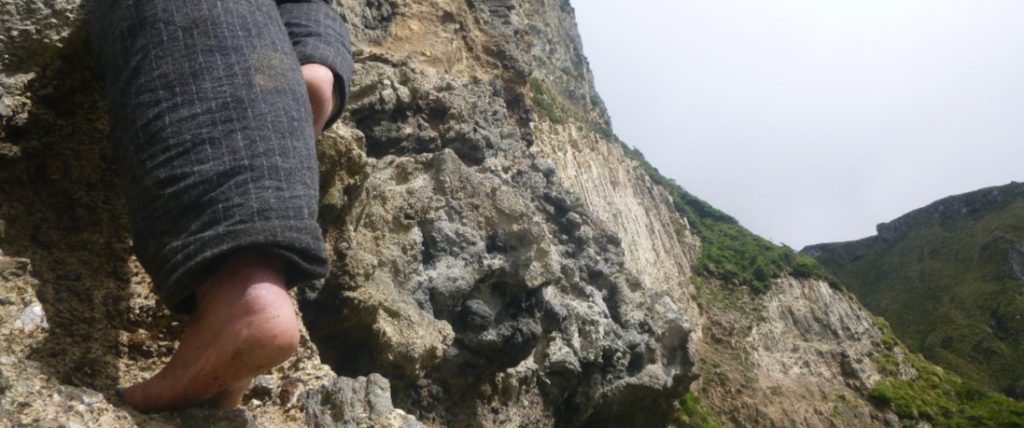
The Invercauld had sunk in heavy seas and at a depth that made salvage impossible. Tough start! The crew found themselves on a desolate windy island. After just three months, only three remained.
Time seemed to stop and they had no idea how long their struggle would continue. Again, very similar to what many are going through right now.
Lesson 2:
‘Strategy’ is about two things: 1) How you’ll organise yourself to achieve an agreed objective; and, 2) Deliberate choices
…………………………
Back at the Grafton brotherhood camp, they knew they needed a plan. The uncertainty of their future was immense, but they chose to take control. It was clear a rescue ship (as agreed in their planning back in Australia) would not arrive so they agreed the new goal. To deliberately choose their future. To build a boat. In Musgrave’s words, “If men abandon us, let us save ourselves.”
Incredibly, they improvised a grindstone to sharpen their hatchet and other tools, manufactured soap and tanned seal hides for new shoes. If that wasn’t enough, they constructed a forge and made more tools and nails from scrap metal. Through discipline and their extraordinary ability to problem-solve, a small boat was built for an ocean crossing.
For Covid-19, stabilising the present, whilst proactively looking ahead is the only sustainable option. Recovery must start on Day 1.
Lesson 3 (thanks to Abraham Lincoln):
‘The best way to predict the future is to create it!’
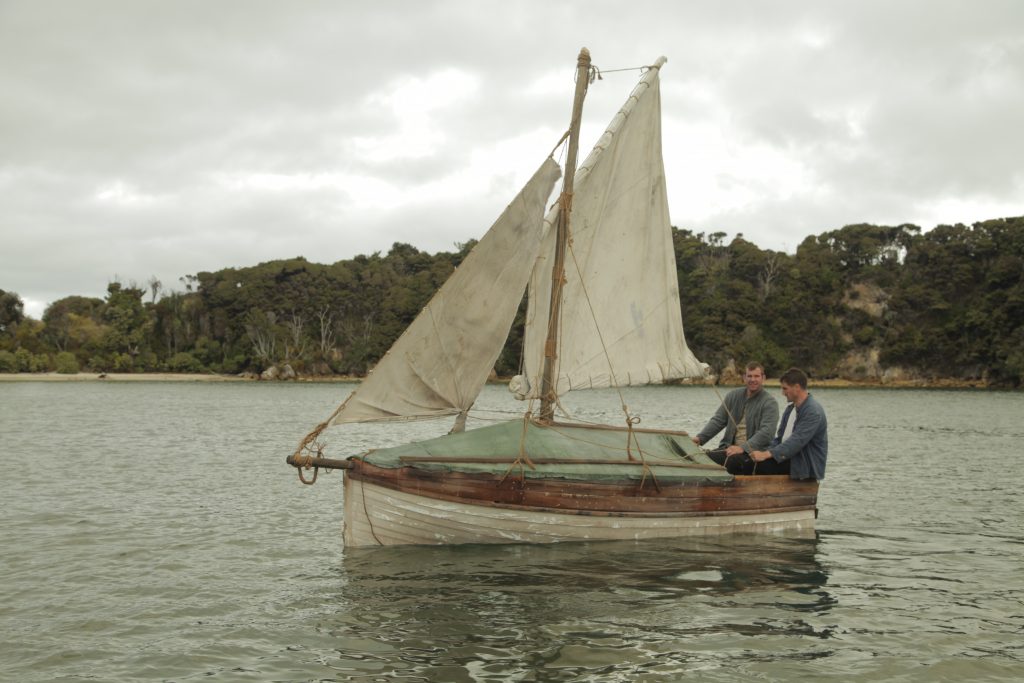
………………….
As for the Invercauld, (and Kevin and I in the show) things weren’t going so well. As the weeks went on, the survivors realised they weren’t very good at finding food. The savagery and lack of leadership continued. Two men, Fritz Hansen and William Horrey, got into a fist fight. Fritz hit the ground face first and was found dead the next morning. Several days later, Holding found Horrey eating Fritz.
Note: In our shows we take on the challenge of wearing the same clothing, using the same equipment and eating the same food. It was a little tough to stick to all three of these rules on this episode!
The three remaining survivors searched aimlessly for food, then built a small ‘canoe’ in the hope for finding food on a smaller island a few hundred meters away. No one trusted its design so Holding stepped-up ahead of his superior.

Finally, a passing ship headed for Peru spotted the three desperate men on the coast and picked them up. They’d been marooned for 12 months and 10 days. As they were welcomed aboard, Captain Dalgarno and Officer Smith were received into the captain’s cabin. Holding, however, was once again just an ordinary seaman and was given room in the deck house with the other lower ranks.
Three men survived to tell the tale, but 22 others never made it home.
Lesson 4:
Hope on its own can be a choice, but it’s not a strategy.
For over 120 years, only Delgarno and Smith’s version of the tale was in print. Only in the mid 1980s was Holding’s unpublished manuscript discovered and the true story of the Invercauld finally revealed.
…………………….
By comparison, what happens when everyone is clear on their shared strengths, roles and goals? Like Shackleton’s Antarctic adventure, it was agreed that for the benefit of the entire crew, some would have to stay behind.
Eighteen months after being shipwrecked, Musgrave, Raynal and the Norwegian Alick McLaren set sail for New Zealand, 460km away.
The huge navigational challenge was only matched by the size of the waves and storm that met them mid-ocean. The Captain said “The surface of the sea was covered with enormous billows, they raised us upon their huge backs to sink us under immediately and plunge us into the depths of the shifting abyss”.
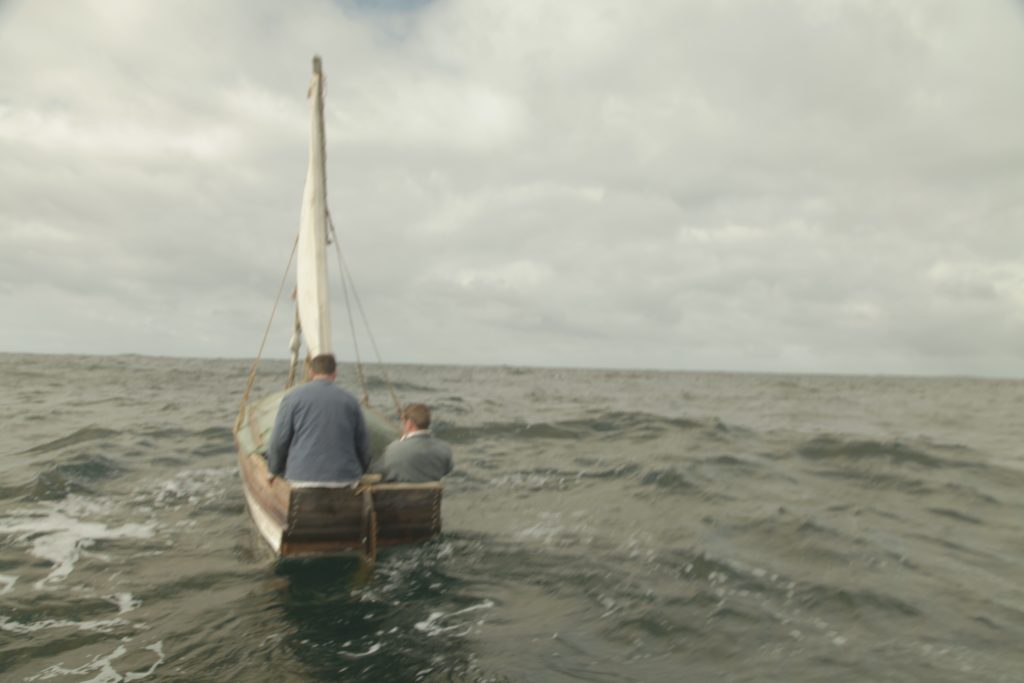
Miraculously they made it to New Zealand after a heroic few days at sea. Musgrave organised a ship and went back to the island himself, as promised, and collected his crewmates. Musgrave was haunted by the thought that there could be other castaways still on the island and so returned a second time on a navy ship to thoroughly search the island.
It was here that he came upon the grisly remains of the crew of the Invercauld. Unknown to anyone at that point was that those last three survivors of a crew of twenty five had only just been rescued by a ship bound for Peru.
When the Invercauld story was revealed the uproar caused the New Zealand government to set up a cast away depot on both the Campbell and the Auckland Islands. Stocked with supplies it would ensure that anyone marooned would be provided for should they have the misfortune to be wrecked on such a desolate shore.
What a story! Plenty of lesson, too. Here are my final thoughts.
Strategy requires a clear goal and making deliberate choices between alternatives;
Leadership is about inspiring others toward that shared goal;
If you don’t know what you stand for, you’ll fall for anything; and, …
If you’re either shipwrecked out there or worried about Covid-19, remember (lesson #5…):
Stabilise the present, but be the creator of your future.
……………………………….
Inspiring Performance helps aspirational organisations gain greater clarity and alignment of their business strategy, operating model and top challenges. Let’s discuss how we can help you create your post-Covid-19 new normal. Funding support could be available to you also. Contact Jamie Fitzgerald or Dr. Mike Pratt for more information.
………………………………
Notes: Intrepid NZ produced by Warner Bros International Television Production NZ; Photographs by Murray Milne (Muz!)
